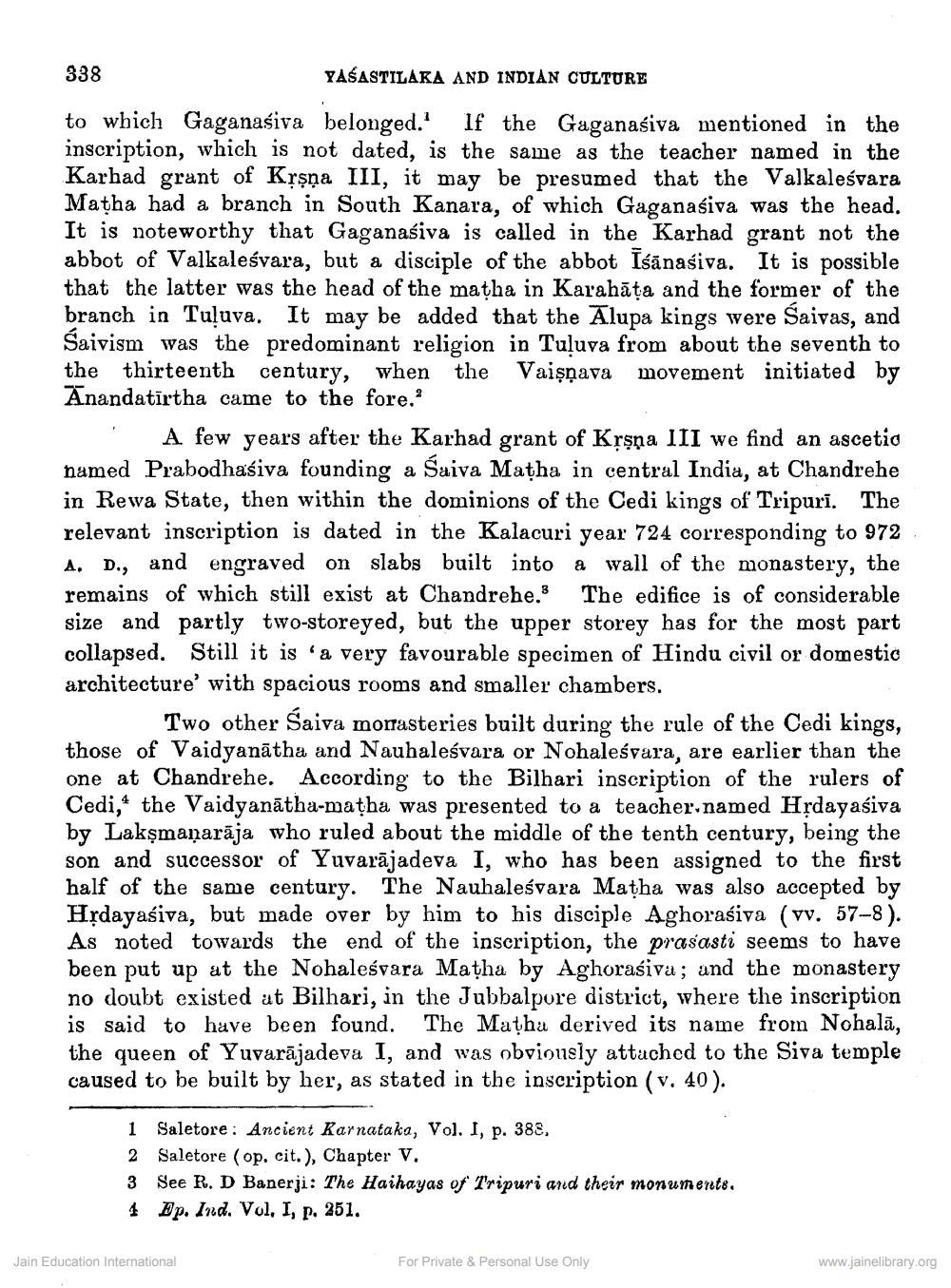________________
338
YAŠASTILAKA AND INDIAN CULTURE
to which Gaganasiva belonged. If the Gaganaśiva mentioned in the inscription, which is not dated, is the same as the teacher named in the Karhad grant of Krşņa III, it may be presumed that the Valkaleśvara Matha had a branch in South Kanara, of which Gaganaśiva was the head. It is noteworthy that Gaganaśiva is called in the Karhad grant not the abbot of Valkaleśvara, but a disciple of the abbot Iśānasiva. It is possible that the latter was the head of the matha in Karahāta and the former of the branch in Tuluva. It may be added that the Alupa kings were Saivas, and Saivism was the predominant religion in Tuluva from about the seventh to the thirteenth century, when the Vaişņava movement initiated by Anandatirtha came to the fore,
A few years after the Karhad grant of Krşņa III we find an ascetio named Prabodhaśiva founding a Saiva Matha in central India, at Chandrehe in Rewa State, then within the dominions of the Cedi kings of Tripuri. The relevant inscription is dated in the Kalacuri year 724 corresponding to 972 A. D., and engraved on slabs built into a wall of the monastery, the remains of which still exist at Chandrehe.3 The edifice is of considerable size and partly two-storeyed, but the upper storey has for the most part collapsed. Still it is 'a very favourable specimen of Hindu civil or domestic architecture' with spacious rooms and smaller chambers.
Two other Saiva morrasteries built during the rule of the Cedi kings, those of Vaidyanātha and Nauhaleśvara or Nohaleśvara, are earlier than the one at Chandrehe. According to the Bilhari inscription of the rulers of Cedi,* the Vaidyanātha-matha was presented to a teacher named Hrdayasiva by Lakşmaņarāja who ruled about the middle of the tenth century, being the son and successor of Yuvarājadeva I, who has been assigned to the first half of the same century. The Nauhaleśvara Matha was also accepted by Hrdayasiva, but made over by him to his disciple Aghorasiva (vv. 57-8). As noted towards the end of the inscription, the prasasti seems to have been put up at the Nohaleśvara Matha by Aghoraśiva; and the monastery no doubt existed at Bilhari, in the Jubbalpore district, where the inscription is said to have been found. The Matha derived its name from Nohalā, the queen of Yuvarājadeva I, and was obviously attached to the Siva temple caused to be built by her, as stated in the inscription (v. 40).
1 Saletore : Ancient Karnataka, Vol. I, p. 388, 2 Saletore (op. cit.), Chapter V. 3 See R. D Banerji: The Haihayas of Tripuri and their monuments. 4 Dp. Ind. Vol. I, p. 251.
Jain Education International
For Private & Personal Use Only
www.jainelibrary.org




